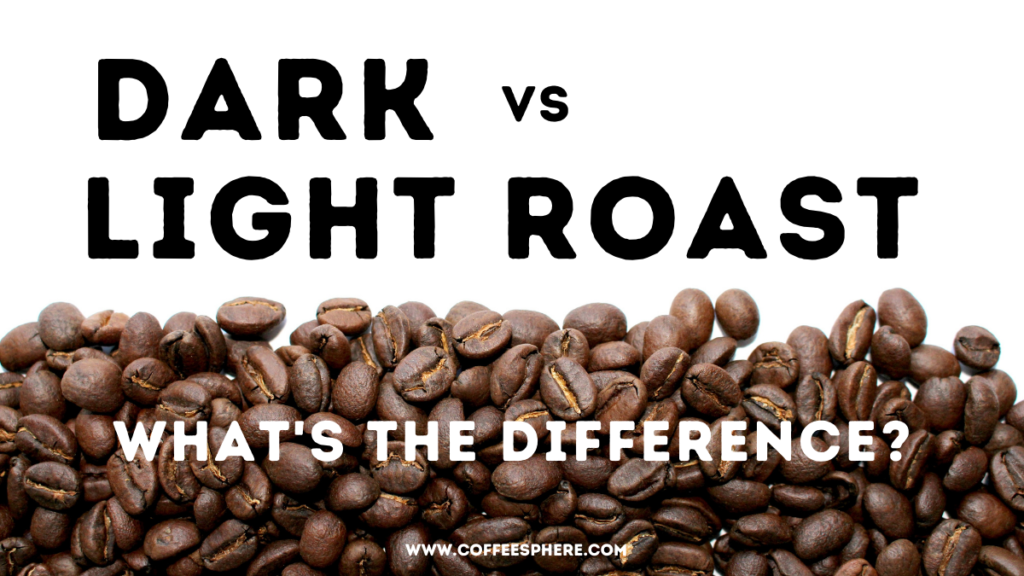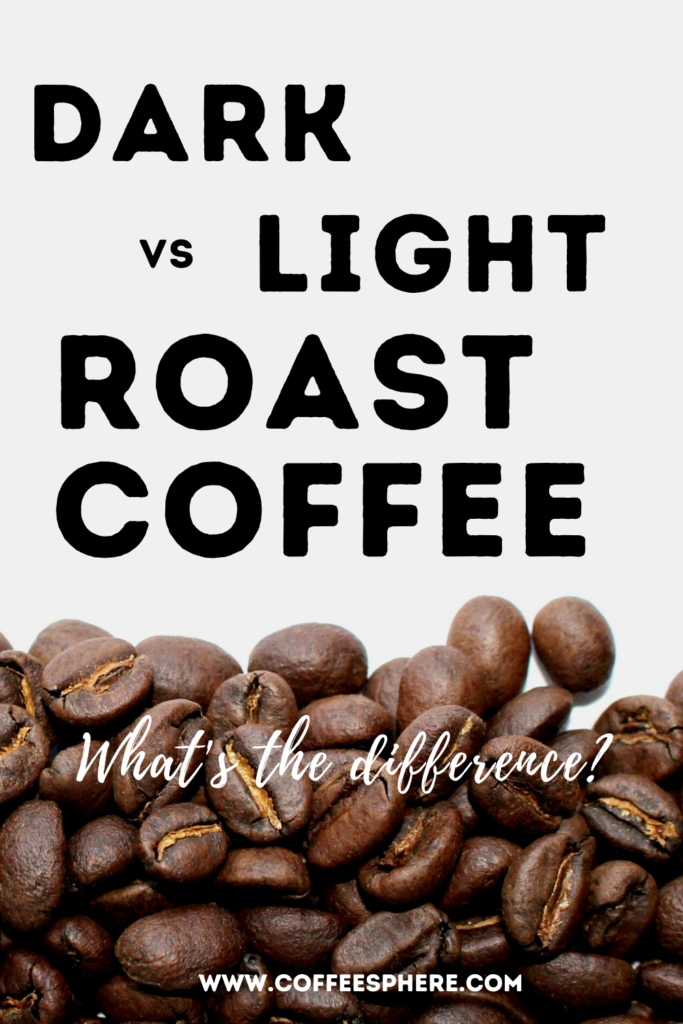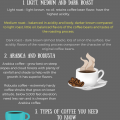Coffee roasting is a complex heating process that turns green coffee beans into brown roasted coffee beans at different levels.

This process brings out the best flavor in coffee beans and lets out the potential underlying flavors, such as chocolate, citrus, honey, berries, etc.
And did you know you can purchase your own coffee roaster to use at home? Here’s our step by step guide on how to roast at home.
Dark Roast vs Light Roast Coffee: Roast Levels
The most common way to determine coffee roast levels is by looking at the color of the roasted coffee beans, ranging from light to dark. The coffee roast level plays a significant role in the resulting flavor of brewed coffee and how it affects the taste of the coffee.
Why should you pay attention to different roast levels?
Each level brings out other characteristics in the coffee beans depending on their roast profile, origins, and quality of the beans. And for some serious coffee connoisseurs, the difference between dark roast coffee and light roast coffee is more than just a palate preference.
Light Roast Coffee
Temperature
Light roast coffee is typically roasted to a temperature of approximately 385 ºF (196 ºC.)
Color
Dry beans with a lighter shade of brown.
Surface Oil
There is no visible oil on the surface of the beans.
Moisture Loss
Light roasting means less moisture loss and, therefore, less weight loss.
Acidity
Light roast beans typically have the highest acidity.
Aroma
Light and fruity, sweet, tangy, malty, subtle floral.
Flavor
Light roast is the truest to the original flavor of the bean and has unique, delicate flavors, such as honey, berries, citrus, rose, jasmine.
Body
They are light and silky because the coffee beans have not been roasted long enough to produce caramelized sugar and oil. Although light roast coffee has a thinner body, it has more complex flavors and delicate mouthfeels.
Caffeine content
Light roast coffee retains most of the caffeine from the coffee beans. They have slightly more caffeine than dark roast coffee if measured by volume.
Dark Roast Coffee
Temperature
To reach the level of a dark roast, coffee beans are roasted to a temperature of 430-445 ºF (221-230 ºC).
Color
This roast has a richer and darker shade of brown, like dark chocolate.
Surface Oil
Has a thin coat of surface oil and often looks shiny.
Moisture Loss
Dark roast loses more moisture and becomes less dense.
Acidity
Dark roast has less acid than light roast.
Aroma
Strong, bittersweet aroma like chocolate with fruit characteristics.
Flavor
Deep and rich, dark chocolate, spices, toasted nuts, molasses, caramel. Dark roasted coffee loses most of the original flavors due to extended roasting time.
Body
Dark roast has a heavy body. It has a lot of bold, smoky, and full-bodied taste to offer.
Caffeine content
Dark roast is roasted for longer and at a higher temperature, causing the caffeine content to decline. So it will have the least amount of caffeine if measured by volume.
Which is healthier?
Researchers have found both dark roast and light roast to have health benefits as they both contain antioxidants and anti-inflammatory properties. Studies have also suggested that there is no significant difference in the caffeine levels of both roasts.
However, light roast coffee performs better in protecting against inflammation and cell damage.
Light roast has a higher level of antioxidant and chlorogenic acid content due to the shorter roasting time and lower temperature. If you want to benefit from more of the nutritional value of the coffee beans, light roast coffee will be your perfect choice.
The rule of thumb is the darker the roast, the lower the acid level. Low acid coffee reduces the risk of heartburn and acid reflux issues.
On the other hand, dark roast coffee is more appropriate for coffee drinkers who have digestive issues.
Conclusion
Coffee roasting has evolved so much in the last few decades, where farmers have steadily increased their crop yields and significantly improved the quality of coffee beans. ‘
Coffee roasters no longer need to hide or mask the impurities and bad flavors of coffee beans. All these reasons explain why light roasted coffee is becoming more and more popular nowadays.
Though the roast level is largely a personal preference, it is one of the main factors in determining how your coffee will taste in your cup.
No matter how you fancy enjoying your coffee, it all starts by choosing the right roast level. Enjoy your cuppa!






Leave a Reply